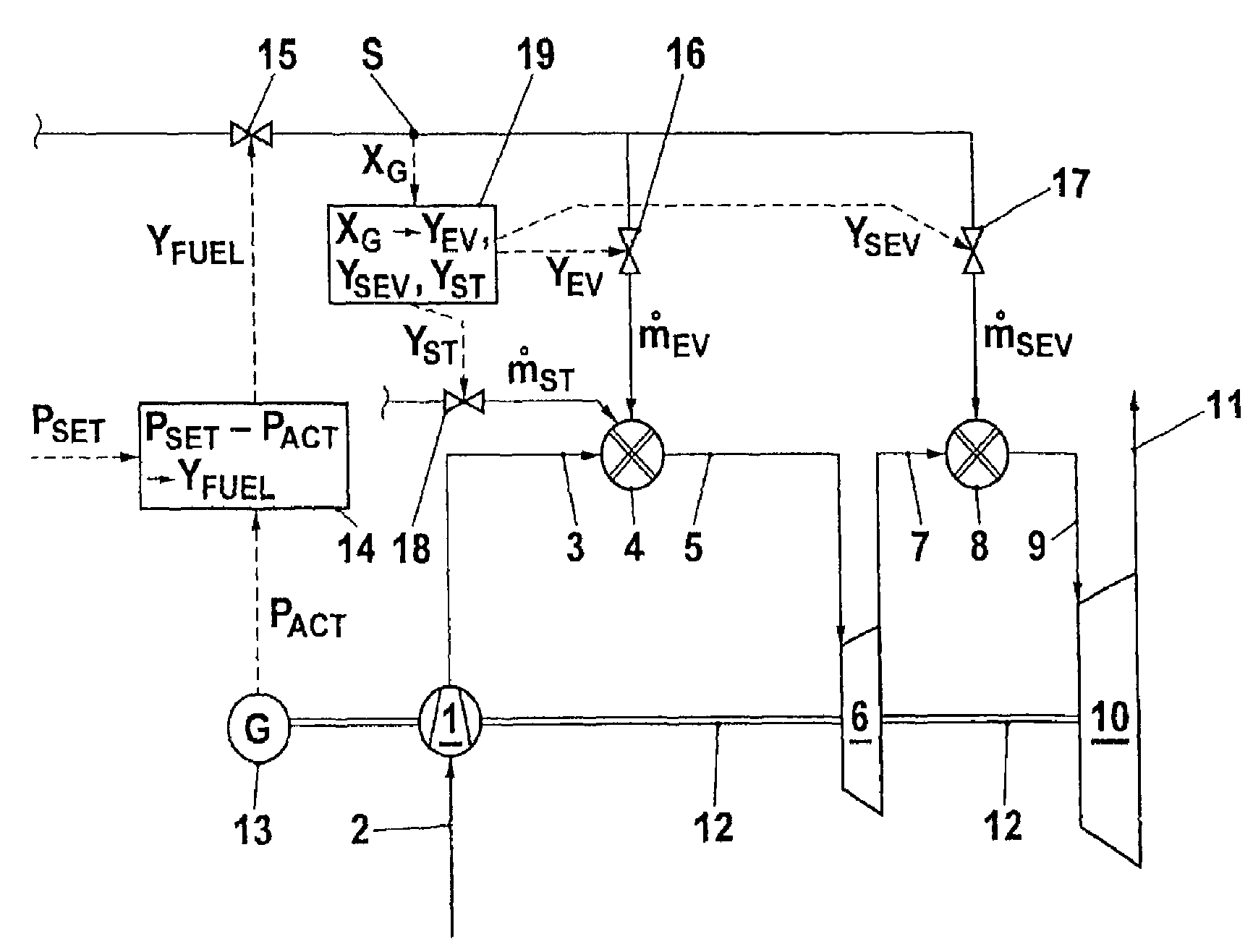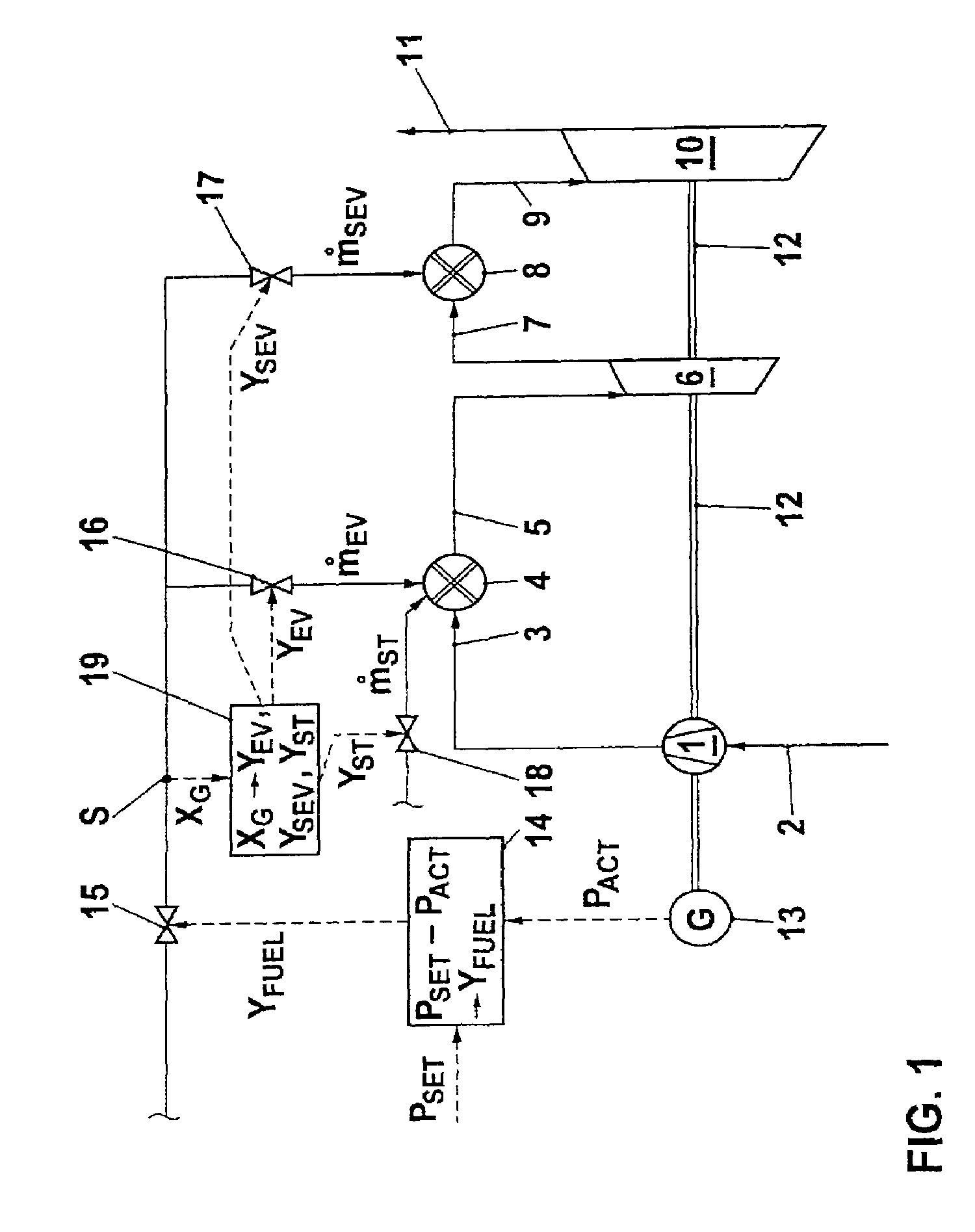Method for operating a turbine group
a gas turbine and group technology, applied in the ignition of the turbine/propulsion engine, instruments, lighting and heating apparatus, etc., can solve the problems of affecting the operation of the turbine group, the risk of flashback to the burner, and the component failure is then likely, so as to avoid flashback or component overheating, maintain the emission level approximately constant, and ensure the stability of flame stability
- Summary
- Abstract
- Description
- Claims
- Application Information
AI Technical Summary
Benefits of technology
Problems solved by technology
Method used
Image
Examples
Embodiment Construction
[0031]FIG. 1 shows a first example of how the method according to the invention can be carried out. A compressor 1, a first turbine 6 and a second turbine 10 are arranged on a common shaft 12. Furthermore, a generator 13 is coupled to the same shaft section. The compressor 1 sucks in ambient air 2, which is compressed and flows as compressed combustion air 3 to a first combustion chamber 4. This may typically, without implying any restriction, be a combustion chamber which is equipped with premix burners of the type described above. In the combustion chamber 4, a fuel quantity {dot over (m)}EV is added to the combustion air 3 and burnt. Hot, compressed flue gas 5 flows to the first turbine 6, where it is partially expanded, so as to output a shaft power, typically with a pressure ratio of 2. Partially expanded flue gas 7 emerges from the turbine 6 at still elevated temperature and flows to a second combustion chamber 8. This may, for example, be a combustion chamber of the type whic...
PUM
| Property | Measurement | Unit |
|---|---|---|
| wavelength | aaaaa | aaaaa |
| temperature | aaaaa | aaaaa |
| infrared spectral range | aaaaa | aaaaa |
Abstract
Description
Claims
Application Information
 Login to View More
Login to View More - R&D
- Intellectual Property
- Life Sciences
- Materials
- Tech Scout
- Unparalleled Data Quality
- Higher Quality Content
- 60% Fewer Hallucinations
Browse by: Latest US Patents, China's latest patents, Technical Efficacy Thesaurus, Application Domain, Technology Topic, Popular Technical Reports.
© 2025 PatSnap. All rights reserved.Legal|Privacy policy|Modern Slavery Act Transparency Statement|Sitemap|About US| Contact US: help@patsnap.com



